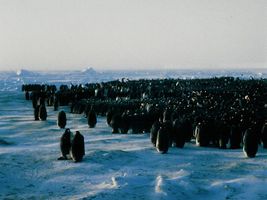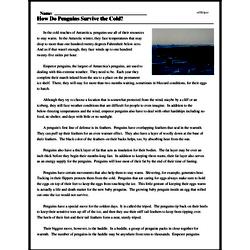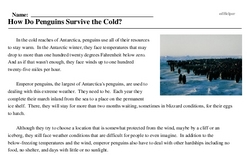How Do Penguins Survive the Cold?
In the cold reaches of Antarctica, penguins use all of their resources to stay warm. In the Antarctic winter, they face temperatures that may drop to more than one hundred twenty degrees Fahrenheit below zero. And as if that wasn't enough, they face winds up to one hundred twenty-five miles per hour.
Emperor penguins, the largest of Antarctica's penguins, are used to dealing with this extreme weather. They need to be. Each year they complete their march inland from the sea to a place on the permanent ice shelf. There, they will stay for more than two months waiting, sometimes in blizzard conditions, for their eggs to hatch.
Although they try to choose a location that is somewhat protected from the wind, maybe by a cliff or an iceberg, they still face weather conditions that are difficult for people to even imagine. In addition to the below-freezing temperatures and the wind, emperor penguins also have to deal with other hardships including no food, no shelter, and days with little or no sunlight.
A penguin's first line of defense is its feathers. Penguins have overlapping feathers that seal in the warmth. They can puff up their feathers for an even warmer effect. They also have a layer of woolly down at the base of their feathers. The black color of the feathers on their backs helps, too, by absorbing heat from the sun.
Penguins also have a thick layer of fat that acts as insulation for their bodies. The fat layer may be over an inch thick before they begin their months-long fast. In addition to keeping them warm, their fat layer also serves as an energy supply for the penguins. Penguins will lose most of their fat by the end of their time of fasting.




